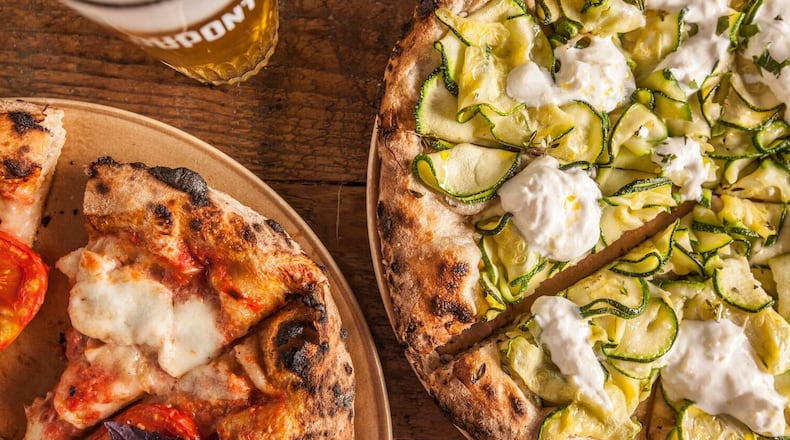Kobe Desramaults may have earned cult-chef status and a Michelin star with his middle-of-nowhere restaurant In de Wulf (which he plans to close in December 2016), but by the Belgian chef’s own admission, “I’m a pretty lousy baker.”
Which explains why he enlisted the skills of Sarah Lemke, a Michigan native trained in artisanal bread-making. She first journeyed to the Flemish countryside for a temporary stint, where she developed In de Wulf’s bread program and ignited Desramaults’ excitement for naturally leavened bread made with stone-milled local grains. Soon a bigger plan was being hatched.
“He said, ‘Why don’t you come back to Belgium and we’ll do this project to bring the craft of real bread back,'” Lemke recalled. “We didn’t really set out with this clear-cut idea. We knew we wanted to build an oven and make really good bread.”
The result is De Superette, a bakery and restaurant that opened in 2014 in an old neighborhood grocery in Ghent. A giant wood-fired oven, which Lemke helped build, is the cornerstone of the convivial space, but De Superette evolved into much more than a loaf shop. A third partner, Rose Greene, the chef de cuisine at In de Wulf at the time, took charge of lunch, brunch and dinner, creating locally sourced menus that are also reasonably priced.
On a summer evening, there was shaved white asparagus — still warm from the grill — with egg, sorrel and whey sauce, and a sublime sourdough pizza topped with generous dollops of burrata, bright yellow and green zucchini slices, and fragrant lemon thyme. The heat from the oven warmed the 60-seat restaurant, an industrial space where almost everything — from the reclaimed-wood tables to the unconventional lighting — was either found or made by hand.
“The art on the walls is made by my girlfriend, and the little lamps with skulls, I made them myself,” Desramaults said.
All that effort seems to have paid off, since seats were reliably packed with a diverse crowd of families sharing platters of hulking marrowbones, and artsy university students sipping pastis at bar seats facing the open kitchen.
“We’re a rowdy bunch that has a lot of fun, and that’s the vibe we want to send out to the restaurant as well,” Lemke said.
Desramaults added: “It was all so spontaneous. But in the end, when you walk in there now, it just feels right.”
About the Author
The Latest
Featured


